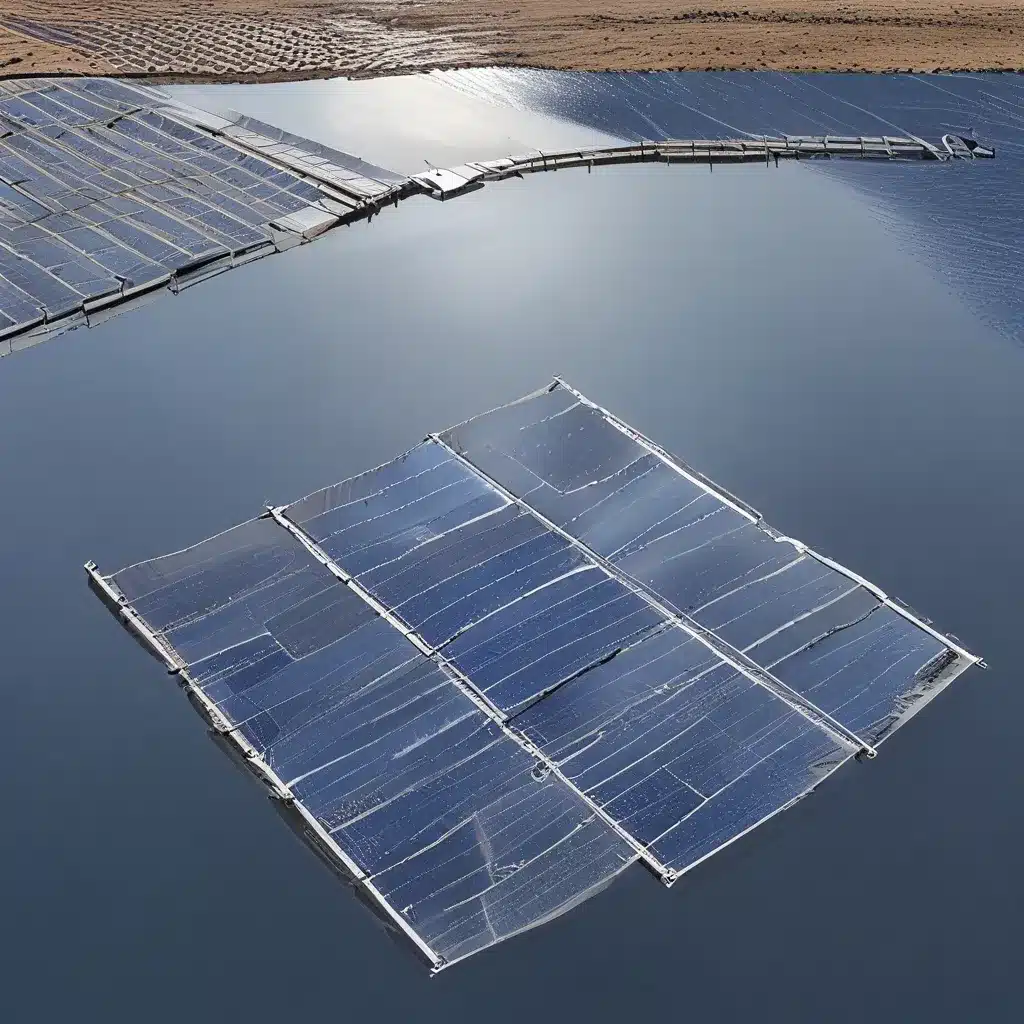
Harnessing the Power of Floatation
As the sun’s rays beat down on the shimmering surface of the reservoir, I can’t help but feel a sense of excitement. This isn’t your average solar installation – this is the future of renewable energy, and it’s happening right here in the small city of Cohoes, New York.
You see, the team at Solar Systems Inc. has been working tirelessly to pioneer a revolutionary concept known as “floatovoltaics” – the idea of installing solar panels directly on the water. And let me tell you, it’s a game-changer.
Floating on Potential
It all started back in 2020, when the city of Cohoes was looking for a way to generate its own solar power and provide affordable energy to its residents. That’s when Joe Seman-Graves, the city planner, came across a game-changing report from the National Renewable Energy Laboratory (NREL).
The report estimated that a staggering 10% of the nation’s annual electricity production could be generated by installing floating solar panels on the more than 24,000 man-made reservoirs scattered across the United States. This was a revelation, and Cohoes knew they had to be a part of it.
Navigating the Uncharted Waters
But of course, pioneering new technology is never easy. Cohoes faced a slew of regulatory hurdles and funding challenges, but they didn’t back down. They fought tooth and nail, working tirelessly to secure a $3 million Community Project Funding Grant and navigating the complex permitting process at the state level.
“We’re the first in the state to get permitted for this kind of project,” Seman-Graves proudly proclaims. “It was a two-year process, but we were determined to make it work.”
And work it did. The team at Solar Systems Inc. has been working closely with the city, using data from existing floatovoltaic systems in places like Sayreville and Canoe Brook, New Jersey to ensure the project is a success.
Riding the Waves of Innovation
But the benefits of this technology go far beyond just generating clean, renewable energy. Floatovoltaics offer a host of additional advantages that make them a truly revolutionary solution.
For starters, they don’t require any land, which is a major bonus in a world where open space is becoming increasingly scarce. And not only that, but the water provides a natural cooling effect for the solar panels, increasing their power output by up to 22% compared to traditional ground-mounted systems.
“The water treatment facility in Cohoes is looking to save up to $150,000 each year on treatment chemicals to curb algae growth in its reservoir,” Seman-Graves tells me, his eyes sparkling with excitement. “Plus, the additional costs to later remove those chemicals. It’s a win-win!”
Riding the Waves of Innovation (continued)
But the benefits don’t stop there. The floating solar panels also provide shade to the reservoir, which can help reduce evaporation and algae growth – two major concerns for water management. And when coupled with hydroelectric dams, floatovoltaics can even increase energy output and cost savings by utilizing existing transmission infrastructure.
“It’s really exciting to see this stuff roll out,” says Evan Rosenlieb, a geospatial data scientist with the NREL. “We’re starting to see a lot of developers, both new and existing, getting into the game pretty rapidly here in the last couple of years. The technology is really starting to come together.”
The Calm Before the Storm
As I stand on the banks of the Cohoes Water Filtration Plant reservoir, watching the gentle ripples of the water, I can’t help but feel a sense of anticipation. This is just the beginning of something big – a revolution in renewable energy that could change the way we power our communities forever.
In late October of 2023, the city of Cohoes will start taking construction bids from developers for their floatovoltaic project, and if all goes according to plan, the installation will be completed in just 6 to 8 weeks during 2024.
Riding the Wave of the Future
And the best part? Cohoes is just the tip of the iceberg. According to a 2023 report published in Nature Sustainability, a staggering 6,256 cities in 124 countries could be powered entirely by floatovoltaic systems like the one planned for Cohoes.
“Really exciting,” Rosenlieb says, his voice brimming with enthusiasm. “Obviously great to see that we’re starting to see this stuff roll out. It’s a game-changer, and I can’t wait to see what the future holds.”
As for me, I can’t wait to see what the future holds, too. Because when it comes to renewable energy, the future is clearly floating on water.


